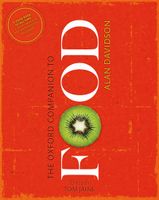Advertisement
Cheese : ‘Ripening’ the Milk
Published 2014
In most cheeses the first stage is to ‘ripen’ the milk by letting lactic acid-producing bacteria sour it; this develops flavour which will be apparent in the finished product. In primitive cheese-making the introduction of bacteria was left to chance. Most modern cheese is made from pasteurized milk (see pasteurization), virtually free of bacteria, to which selected cultures are added. For example, Swiss cheeses such as gruyère and emmental, whose manufacture is rigidly controlled, depend on a culture of Streptococcus thermophilus, Lactobacillus bulgaricus, and Propionibacterium shermani. The most significant flavourings produced by these three are respectively (and to simplify greatly) diacetyl for a ‘buttery’ taste, lactic acid for sharpness, and propionic acid for the characteristic ‘Swiss’ flavour. The propionic bacteria also give off carbon dioxide gas which forms the bubbles that appear as ‘eyes’ in the cheese. Milk is kept fairly warm during ripening to encourage the bacteria to grow.


